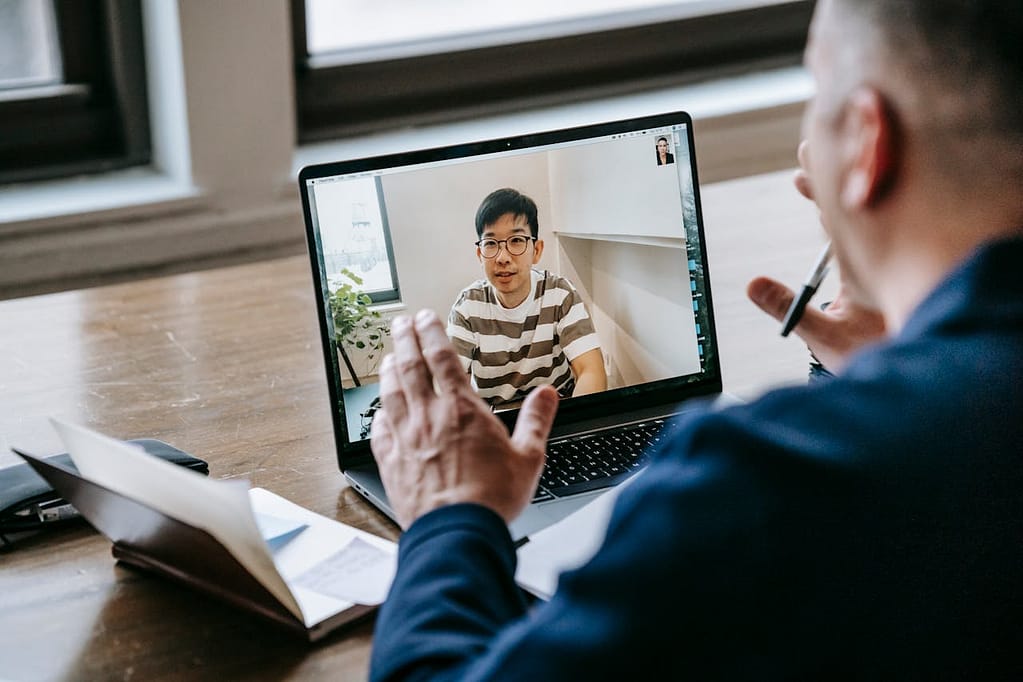Elevate: Habits of Successful People
What does it take to reach your highest potential? To truly attain the success you want so bad? Below we’ll look at five key hacks of successful people, to help you elevate both your lifestyle game and path to success! Skip Intro
Table of Contents
Overview
Welcome to Elevate: Habits of Successful People, where we will explore key habits to elevate your lifestyle and propel you towards success.
Within this article, we will delve into 5 crucial factors that can improve your mental landscape. Consequently, impacting the decisions you make daily, your productivity levels, and your overall mindset.
For instance, the benefits of accessing altered brain-waves.
Why unshakeable self-belief is essential to achieve your goals.
The reason behind why visualisation techniques are rightly so becoming a pop-culture phenomenon for manifestation.
How our nearest and dearest may impact us, for better or worse.
And last but not least, the importance of finding mentors to guide your growth.
1. Meditative States
You know those epiphanies you get when your mind is relaxed? Like “shower thoughts”?
Well, turns out, your brain needs those moments of stillness to supercharge your productivity and creativity.
Albert Einstein is well known for making some of his breaking theories whilst playing on the violin.
Beethoven and Darwin, considered walks as a source of inspiration.
While physicist Richard Feynman, enjoys drumming to enter a state of outside-the-box thinking.

When your brain is in a Meditative State, it allows for greater synchronicity between your brain cells—due to the creation and branching of neural connections.[1]
With the term Meditative State, I’m including both the mental states achieved during meditation and the now widely publicised flow-state, originally coined by psychologist Mihaly Csikszentmihalyi.[2]
You might be familiar with flow, it’s best described as the moment you become one with the activity at hand, fully immersed in the present moment.
These brain enhancing effects are well-documented in individuals who regularly conduct flow-inducing activities, such as playing sports or a musical instrument.[3,4]
Although distinct concepts, meditation and flow, yield similar effects:
- enhanced creativity[5,6]
- increased performance[7,8]
- detachment from personal issues[9,10]
- increased alpha and theta brainwaves[11]
Increased alpha and theta brainwaves are associated with enhanced focus, a relaxed state, heightened cognitive functions, and mental clarity.[12]

Further, meditation is well-documented for increasing grey matter volume.
Increased grey matter volume is linked with improved self-awareness, memory, and self-regulation. These changes were shown to start in as little as 10 hours of meditation practice, spread over a month![13]
Meditation also synchronises the two hemispheres of the brain. It does this by thickening the connective tissues between them, called the corpus callosum.[14]
These changes are linked with enhanced cognitive performance, which even the CIA researched as far back as 1983, as a potentially effective method to elevate consciousness and maybe even tap into psychic abilities!
Fascinated by altered brain states and want to dive deeper?
Check out the Silva Ultramind System on Mindvalley, a technique used by world-class athletes and performers. This course teaches you how to tap into alpha, theta, and delta brainwaves—allowing you to boost creativity, intuition, and your highest-level performance!
2. The Power of Self-Belief
Truly believing in yourself is an essential part of becoming successful.
Without self-belief, you’d be too scared to chase those personal goals, persevere in the face of challenge, and seize opportunities.
Opportunities that others may consider risky.

The problem is, low self-belief has all sorts of knock-on effects. Such as lower job satisfaction, lack of perseverance, and a fear of change and growth.
For instance, one study of 500 teenagers revealed that students with low self-belief were also more likely to be failure-avoidant.[15]
Meaning, they actively avoid challenging situations and tend to opt for “safe” options.
Consequently, students with low self-belief also had lower achievements in sports, academics, and satisfaction within social groups.
But maybe self-belief on its own isn’t enough.
The key component appears to be having self-belief in your ability to learn and persevere in the face of challenge.

One study of over 200 inventors demonstrated that self-efficacy and perseverance was their overarching quality.
Specifically, these successful entrepreneurs believed they have strategies in place to deal with anything thrown their way, that they can learn any skill necessary, and are fully responsible for the consequences of any outcome.[16]
Having a sense of self-belief, therefore, not only allows a sense of control over outcomes but provides a genuine ability to learn and grow from challenges or any perceived failure.
Building unshakable self-belief is often the missing key to success.
Want to break through subconscious limitations & start living your highest potential?
Check out Duality, a Mindvalley course that dives into energy work, intuition-development, and practical ways to align your inner world with outer success.
3. Visualisation: A Tool For Manifesting Success
One effective way to increase your success may be through becoming best friends with future-you.
More specifically, if you can vividly imagine your future-self, emotionally connect with them, and maybe even write letters to them, you are far more likely to carry out their good habits, save up for retirement, or even exercise.[17]
Two decades of research from Prof Hal Hershfield has repeatedly demonstrated—the closer you feel to your future-self, the more likely you are to perform their habits.

Techniques that involve emotionally and visually connecting with future-you, increases chances of success by making your goals clear and the destination seem plausible.
Ultimately, making it easier to perform the habits you know you need to do to reach those goals.
You’re likely aware that visualisation techniques are commonly practiced by professional athletes.
As stated by Neurocoach, Dr. Alena Candova, regularly visualising running a race track alone can induce neuroplasticity, that is, changes in your brain’s wiring.[18]
These changes align with the mental toolkit needed to achieve your aspirations, allowing you to basically reprogram your subconscious mind for success.
It’s no accident that visualisation techniques for “manifestation” have emerged as a pop-culture phenomenon.

With proponents such as Joe Dispenza and Deepak Chopra, inviting the rules of quantum physics into the equation.
Such as the existence of “quantum fields” with endless possibilities, and the “observer effect” that “collapses” all the superpositions (possibilities) of what could happen, into the manifestation of the one desired outcome.
Nonetheless, whether you’re applying visualisation for quantum-level manifestation, to win a race, or simply to improve your daily habits, these techniques all share a core principle:
Approach each challenge with a clear vision of your desired outcome, allowing your mind to help manifest that reality into being.
Ready to Quantum Jump and manifest the life you desire?
Check out Mindvalley’s Quantum Jumping course, which shows you how to shift into alternate versions of yourself. Versions that already have the success, wealth, or relationships you’re after. It’s like hacking your future-self’s reality and pulling it into the present!
4. Show Me Your 5 Closest…
…and I’ll tell you who you are.
Ever heard the expression ‘you are the average of the five people you spend the most time with‘?
Successful people take this principle seriously and understand it’s not just a cliché.
They thoughtfully curate their inner circle, ensuring they are surrounded by individuals who inspire, challenge, and motivate them.

This is pivotal for success, as our own behaviour and level of success can be primed by those we spend the most time with, subconsciously mimicking their habits and behaviours.[19]
Likewise, not only do we become more like those around us, we are also naturally attracted to those with shared commonalities.
Core aspects of our traits such as educational attainment, principles, mindset, income level, political beliefs, and leisure activities tend to heavily overlap with those we gravitate towards.[20]
This is called Festinger’s social comparison theory and can be neatly summarised by a second expression: ‘birds of a feather flock together’.[21]
Shared commonalities are necessary, as it reinforces our sense of truth, belonging, and acceptance.
As confidence in our perceptions, attitudes, feelings, and behaviours needs to be validated by others.[22]

It may be no surprise then that successful start-up entrepreneurs are more likely to have friends who have already achieved business success.
But what’s more intriguing is how social relationships with others in your intended business field, is a greater predictor of success within a start-up business, over education level or having the “right” personality.[23]
Consequently, when determining the pool of individuals we spend the most time with, we may need to consider evaluating our current friendships and their impact on our self-growth.
5. Positive Role-Models
Many accomplished individuals didn’t achieve their success alone, but often started their careers in the shadow of a role-model.
A role-model who inspired them, showed them the route down their chosen path, and served as guidance throughout their challenges.
Some renowned examples of successful individuals who attribute their success to a role-model include:
- Steve Jobs, who often speaks highly of how his mentorship from Robert Noyce influenced his approach to technology and entrepreneurship
- Mark Zuckerberg, who claims he rediscovered his purpose in work with the insights and guidance of Steve Jobs
- And Oprah Winfrey, who credits Maya Angelou, the poet and writer, as one of the greatest mentors she has ever known[24]

Learning from the experiences and hurdles of role-models and how they overcame obstacles, serves as a strong source of inspiration and influences us in adopting similar actions when we face comparable difficulties.
Which is no surprise, as we naturally imitate behaviours we value and are repeatedly exposed to.
Most importantly, we tend to be inspired by role-models who are similar to us in some way and believe the goal of their success is attainable to us.[25]
Positive role models often embody qualities or achievements that align with our current values, showing us what a “refined” version of ourselves could be.
Whether it’s their professional accomplishments, personal character, or commitment to a cause you value.
Studies highlight that with the guidance of a positive role-model, you’ll feel more capable and empowered to pursue your aspirations.[26]
Boosting your self-confidence and identification with the ideal future you.
Finding a positive role model is therefore a crucial step to influence character development on your path to success. Mentors are available if you seek them.
You may find a mentor by going to a conference or course within your chosen field, through social media, or through searching for one on a website such as mentoring-club.com.
Here you can find yourself a mentor on anything from emotional intelligence to cryptocurrencies to start-up funding.
Sometimes, more experienced individuals in your sector might befriend you and mentor you for free. These individuals might end up being a more experienced colleague or senior, taking you on in an unofficial mentor role.
All you need to do to find these people is show your passion and love towards the goal, and a desire to advance.
Final Words
Throughout this article, we explored some pivotal influences that shape our journey towards success.
These foundational elements not only define who we are at our core but also provide the tools for personal transformation.
Most importantly, getting connected to our future-selves might be the hack to drive future success.
One innovative method to ensure we implement good habits, might be solved by “meeting” and conversing with an AI-generated hologram of our future selves.
This approach seems to enhance our connection with our future identities, increasing the likelihood of embodying our ideal habits.[27]
Such technology could potentially revolutionise how we tap into good habits, ultimately accelerating our self-transformation and personal growth.
Disclosure
Mindvalley links in this post are affiliate links, meaning I earn a small commission if you make a purchase—at no extra cost to you. I only recommend courses I personally rate or think you’ll love!




